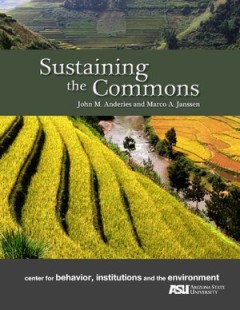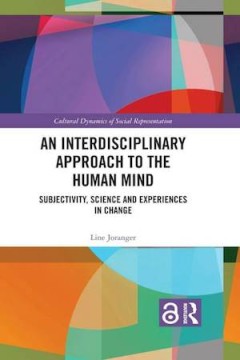Filter by

Neuroscience and Critique Exploring the Limits of the Neurological Turn
Recent years have seen a rapid growth in neuroscientific research, and an expansion beyond basic research to incorporate elements of the arts, humanities and social sciences. It has been suggested that the neurosciences will bring about major transformations in the understanding of ourselves, our culture and our society. In academia one finds debates within psychology, philosophy and literature…
- Edition
- -
- ISBN/ISSN
- 1317500245
- Collation
- -
- Series Title
- -
- Call Number
- -

Sustaining the Commons
In this book you will learn about institutions—the rules and norms that guide the interactions among us. Those rules and norms can be found from traffic rules, rules in sports, regulations on when and where alcohol can be consumed, to constitutional rules that define who can become president of the United States of America. Rules and norms guide us to cooperative outcomes of so-called collect…
- Edition
- -
- ISBN/ISSN
- -
- Collation
- -
- Series Title
- -
- Call Number
- -

Principles of Social Psychology 1st International Edition
The first International edition of this textbook provides students with an introduction to the basic concepts and principles of social psychology from an interactionist perspective. The presentation of classic studies and theories are balanced with insights from cutting-edge, contemporary research. An emphasis on real world examples and applications is intended to guide students to critically a…
- Edition
- -
- ISBN/ISSN
- -
- Collation
- -
- Series Title
- -
- Call Number
- -

An Interdisciplinary Approach to the Human Mind Subjectivity, Science and Ex…
One of the main aims of modern mental health care is to understand a person's explicit and implicit ways of thinking and acting. So, it may seem like the ultimate paradox that mental health care services are currently overflowing with brain concepts belonging to the external, visible brain-world and that neuroscientists are poised to become new experts on human conduct. An Interdisciplinary App…
- Edition
- -
- ISBN/ISSN
- 9781138233423
- Collation
- -
- Series Title
- -
- Call Number
- -

Breaking Intergenerational Cycles of Repetition A Global Dialogue on Histori…
The authors in this volume explore the interconnected issues of intergenerational trauma and traumatic memory in societies with a history of collective violence across the globe. Each chapter's discussion offers a critical reflection on historical trauma and its repercussions, and how memory can be used as a basis for dialogue and transformation. The perspectives include, among others: the heal…
- Edition
- -
- ISBN/ISSN
- 9783847402404
- Collation
- -
- Series Title
- -
- Call Number
- -

Youth Violence Sources and solutions in South Africa
Youth violence: sources and solutions in South Africa thoroughly and carefully reviews the evidence for risk and protective factors that influence the likelihood of young people acting aggressively. Layers of understanding are built by viewing the problem from a multitude of perspectives, including the current situation in which South African youth are growing up, perspectives from developmenta…
- Edition
- -
- ISBN/ISSN
- 9781920541286
- Collation
- -
- Series Title
- -
- Call Number
- -
 Computer Science, Information & General Works
Computer Science, Information & General Works  Philosophy & Psychology
Philosophy & Psychology  Religion
Religion  Social Sciences
Social Sciences  Language
Language  Pure Science
Pure Science  Applied Sciences
Applied Sciences  Art & Recreation
Art & Recreation  Literature
Literature  History & Geography
History & Geography